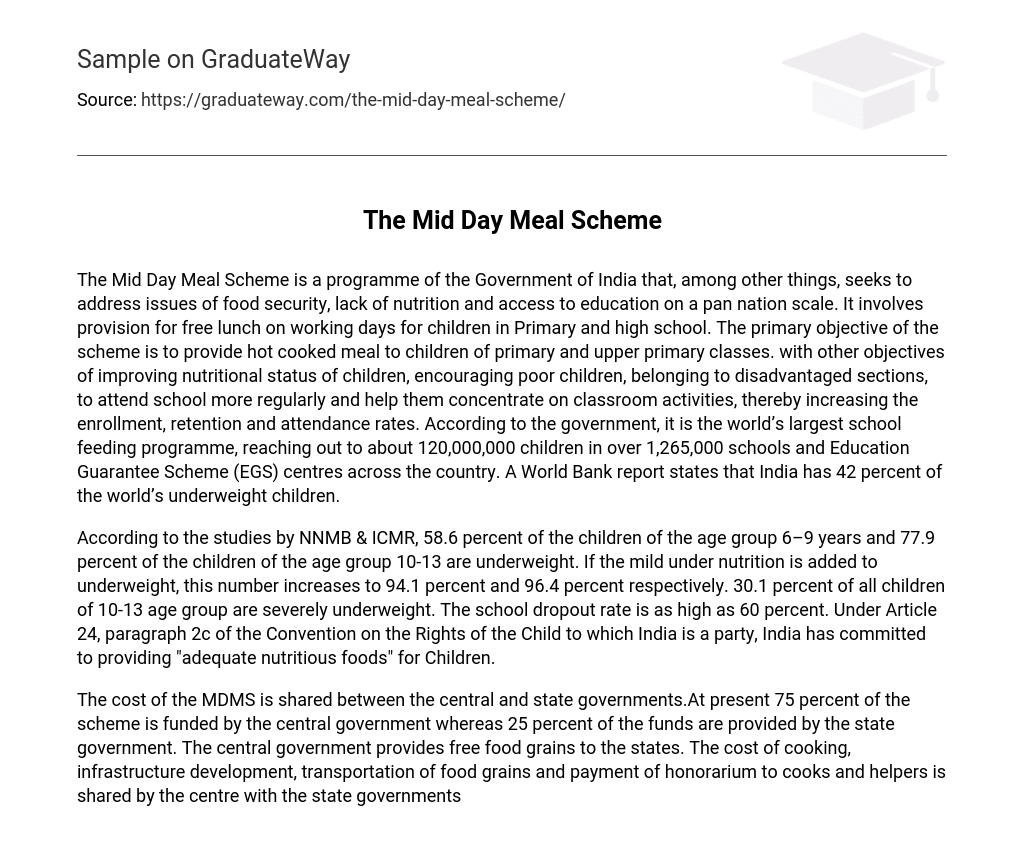The Mid Day Meal Scheme is a programme of the Government of India that, among other things, seeks to address issues of food security, lack of nutrition and access to education on a pan nation scale. It involves provision for free lunch on working days for children in Primary and high school. The primary objective of the scheme is to provide hot cooked meal to children of primary and upper primary classes. with other objectives of improving nutritional status of children, encouraging poor children, belonging to disadvantaged sections, to attend school more regularly and help them concentrate on classroom activities, thereby increasing the enrollment, retention and attendance rates. According to the government, it is the world’s largest school feeding programme, reaching out to about 120,000,000 children in over 1,265,000 schools and Education Guarantee Scheme (EGS) centres across the country. A World Bank report states that India has 42 percent of the world’s underweight children.
According to the studies by NNMB & ICMR, 58.6 percent of the children of the age group 6–9 years and 77.9 percent of the children of the age group 10-13 are underweight. If the mild under nutrition is added to underweight, this number increases to 94.1 percent and 96.4 percent respectively. 30.1 percent of all children of 10-13 age group are severely underweight. The school dropout rate is as high as 60 percent. Under Article 24, paragraph 2c of the Convention on the Rights of the Child to which India is a party, India has committed to providing “adequate nutritious foods” for Children.
The cost of the MDMS is shared between the central and state governments.At present 75 percent of the scheme is funded by the central government whereas 25 percent of the funds are provided by the state government. The central government provides free food grains to the states. The cost of cooking, infrastructure development, transportation of food grains and payment of honorarium to cooks and helpers is shared by the centre with the state governments





